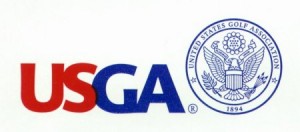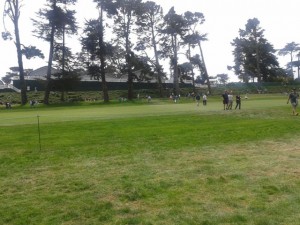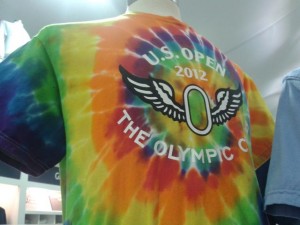 Forgive me, USGA, for I have sinned. If I could, I would call a penalty on myself for violating one of your rules — though I’m not sure how many strokes it would cost me for using a cell phone on the course during U.S. Open competition.
Forgive me, USGA, for I have sinned. If I could, I would call a penalty on myself for violating one of your rules — though I’m not sure how many strokes it would cost me for using a cell phone on the course during U.S. Open competition.
The truth is, I’m not really repentant. The crime was worth it, and I’d do it again. It’s just too compelling to use a mobile device to get information you can’t get otherwise, and to enrich the experience of watching something live. For many reasons, live golf is a perfect atmosphere for second-screen access and instant communication. There’s lots of downtime in between the action, perfect for catching up on what’s happening on the rest of the course, or for sharing our experience with absent friends. Or for keeping up with work while we’re sneaking away to watch golf.
So it’s you, not me, USGA, who needs to change. Soon. So that all the fans who love golf enough to show up in person can share my secret pleasures from Friday, which included being able to watch play on the 14th hole, live, while sitting alone in the sun on the side of the 17th fairway.
Let it be noted that I committed this crime using the USGA’s own very fine U.S. Open app. And its wonderful live video feature. How can I comply with your rules when your very own programmers have built such a beautiful HD-quality viewing mechanism? It was just too good to resist.
To be clear, as a media member I was authorized to have a cellular device on the grounds — under the stipulation that I use it only in the media tent. Why did I not comply? Basically, because, USGA, you have an information-gap problem. In other sports like baseball, teams are putting in advanced digital access because they are worried about competing with the couch — they don’t want fans to stay home because the experience there will be better than the ballpark.
At the U.S. Open you may not have that problem, since golf’s best test will almost certainly always be a sellout, like it was this week in San Francisco. And I get it that you want to go old-school and not have electronic scoreboards everywhere you look. But the quaint stuff only goes so far. The simple biggest problem I saw out on the course Friday was that many fans — your patrons — had no friggin idea who was in the lead, who was in the hunt, or where particular players were on the course. And that took away from the experience.
Couch potatoes at home or distracted folks at work had much better info at their finger tips or laptop screens — while watching online at home in the morning I was loving the Playtracker scoring feature on the U.S. Open website, which showed in a graphic view of the course who was playing which hole, and what their up-to-date stats were. And the USGA’s Open Twitter feed is fabulous, providing up-to-the-second info and compelling links. At Olympic we were stuck looking at small scoreboards that were hard to see in the setting sun.
At one point, standing alongside the 17th fairway we all had no idea whether Tiger birdied or bogeyed No. 7, and when the scoreboard changed his stats you couldn’t tell if the “1” was red or green because of the way the sunlight was hitting the board. Luckily someone wearing one of those earpiece radios came by and set us all straight. But the future of live golf shouldn’t be a bunch of zombies all listening silently. Give us some easy to understand rules, and let our cell phones be free so that we can view and share information to enrich our on-site experience.
I get it that overzealous picture-taking fans, like those who ticked off Phil at the Memorial, are to be avoided. But why not try some clear, simple rules with clear penalties? Say, anyone who doesn’t turn their ringer sound down and takes an audible picture gets escorted off the grounds — just like belligerent drunks. You don’t let the few over-imbibers keep the rest of us from enjoying a cold beer; don’t let bad cell users keep the rest of us from being able to stay connected to stats and views during the inevitable downtimes between groups.
Nobody cared that I was transgressing Friday, probably because I was discreet and know the simple trick of turning my volume to vibrate. I have faith that most other golf fans will similarly comply — hell, several people in the group I was around on 17 even turned around to stop a USGA cart that was loudly headed up the path while Tiger was trying to make birdie. Real golf fans get it, that players want quiet to do their thing. So why not try tricks like a ban on cell-phone pictures around tees and greens? And set up some “Tweet tents” or Wi-Fi zones far away from sensitive action areas? Not only will that keep sad, unconnected fans happy, but I smell a Starbucks sponsorship. Make this something where everyone wins.
If you need some help, I am happy to volunteer to be part of a research committee to determine what fans want to do, and how the experience can work for everyone. It was heartening to talk to USGA officials this week and hear that they understand that people want to use their digital devices while at competitions. Let’s hope this happens sooner rather than later, so my days of crime can come to an end.









